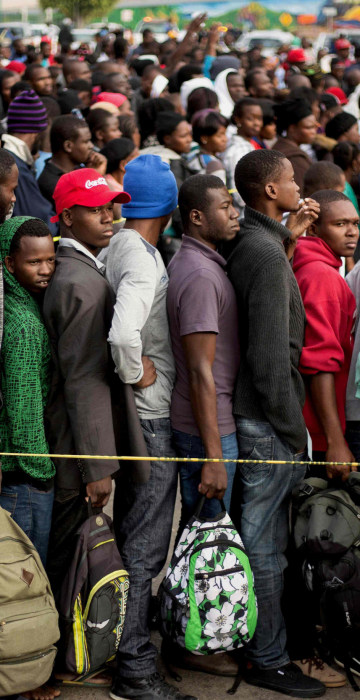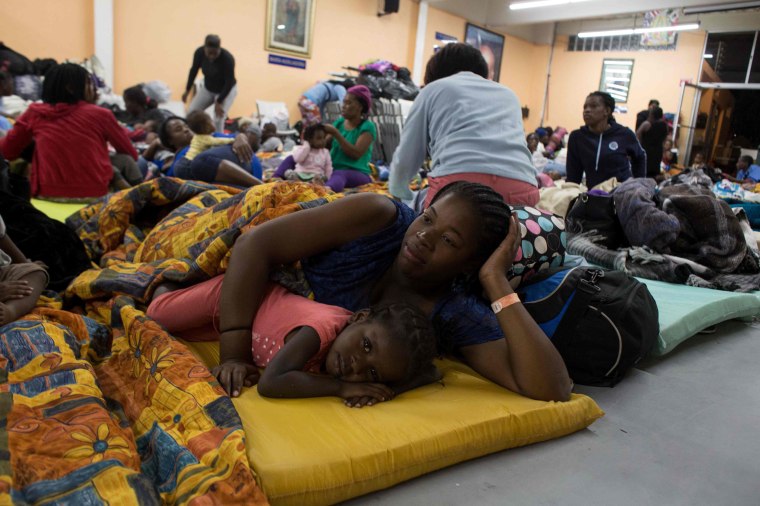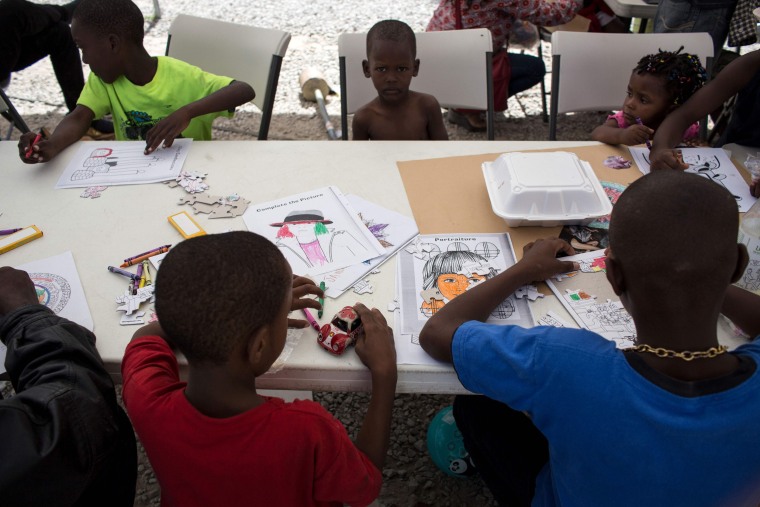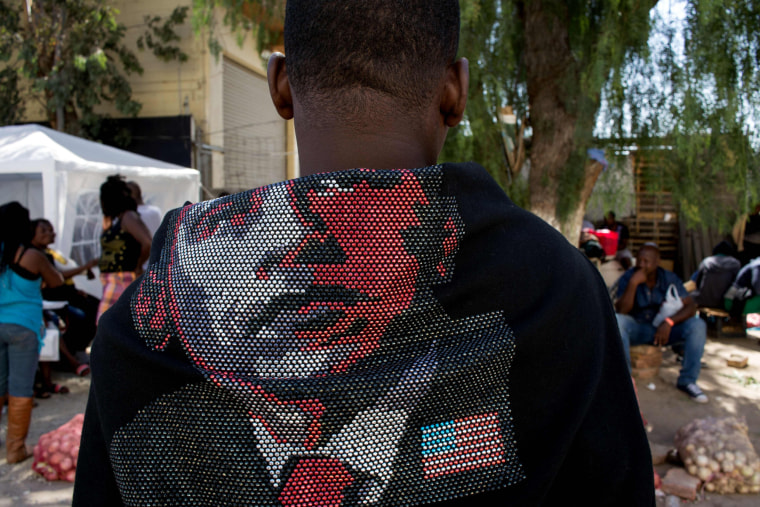
Photo
U.S. Policy on Deporting Haitians on Hold After Hurricane
Haitians travelling through South America before Hurricane Matthew are stuck in limbo between Tijuana and California.

Haitian and African migrants seeking asylum in the United States, line up outside a Mexican Migration office, on October 3, 2016, in the border city of Tijuana, in the Mexican state of Baja California.
Hurricane Matthew's destruction in Haiti has put on hold a new policy of deporting Haitians who are in the United States without permission, but the government intends to return to it in the future, U.S. Homeland Security Secretary Jeh Johnson said on Oct. 11.
Speaking in Mexico City where he held talks with Cabinet officials on border, migration and security issues, Johnson noted that some flights to Haiti have been suspended in the wake of the storm, which has killed hundreds of people.
"We will have to deal with that situation, address it, be sympathetic to the plight of the people of Haiti as a result of the hurricane," he said. "But after that situation, after that condition has been addressed, we intend to resume the policy change that I brought about several weeks ago."
The United States stopped deporting Haitians after the Caribbean country was hit by a devastating earthquake in 2010, freeing them on humanitarian parole instead. On Sept. 21, Homeland Security began putting Haitians in detention facilities as a prelude to sending them home.


Haitian migrants reach for a sandwich through a gate as they wait for their opportunity to get a spot at the Padre Chava soup kitchen and shelter on Oct. 6.
The National Human Rights Commission of Mexico on Saturday called on the government to support the saturated shelters and humanitarian centers. Mexico's National Immigration Institute said they were trying to provide the asylum seekers with food and water while they waited for a U.S. response.


Haitian and Africans sleep on the street near a migration office, late on Oct. 2.
Thousands of Haitians have been arriving at Tijuana in recent weeks hoping to cross into the United States, creating a migratory logjam at the border. They have also overwhelmed Mexican migrant shelters while they wait, with many of them sleeping outside on sheets of cardboard.

A sign at the Migrant Care office points to the California, Oct. 4.
Mexican Interior Secretary Miguel Angel Osorio Chong said the Haitian migrants were a subject of talks with Johnson and it was Mexico's responsibility to try to improve their conditions while they are in the country.
He also expressed hope that the United States, which has been processing only about 75 Haitian migrants per day at the San Ysidro crossing in San Diego, may be able to speed that up.
"Very possibly (their numbers) may rise following the hurricane's passage," Osorio Chong said.
The U.N. High Commissioner for Refugees and the International Organization for Migration had representatives visit Tijuana this week to take stock of the situation.






According to Congressional testimony, Immigration and Customs Enforcement Director Sarah Saldana said that 40,000 Haitians were on their way and called it an "emergency situation" on California's border.
The deportation policy change may dramatically affect Haitians who have been showing up at U.S. border crossings in California, claiming they lived in Brazil for several years, left for economic reasons, and traveled through Central America and Mexico.
Homeland Security officials say about 5,000 Haitians have been stopped at San Diego's San Ysidro port of entry since October, compared to only 339 for the 2015 fiscal year. Large numbers have also turned themselves in to U.S. inspectors in Calexico, California, 120 miles east of San Diego.